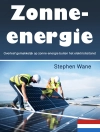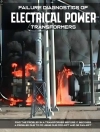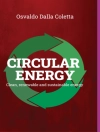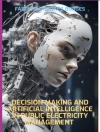This second of three volumes from the inaugural NODYCON, held at the University of Rome, in February of 2019, presents papers devoted to Nonlinear Dynamics and Control. The collection features both well-established streams of research as well as novel areas and emerging fields of investigation. Topics in Volume II include influence of nonlinearities on vibration control systems; passive, semi-active, active control of structures and systems; synchronization; robotics and human-machine interaction; network dynamics control (multi-agent systems, leader-follower dynamics, swarm dynamics, biological networks dynamics); and fractional-order control.
İçerik tablosu
Part A: Vibration absorbers and isolators.- Active nonlinear vibration absorber for harmonically excited beam system.- Comparison of linear and nonlinear damping effects on a ring vibration isolator.- Electroacoustic absorbers based on passive finite-time control of loudspeakers: a numerical investigation.- Seismic response prediction of multiple base-isolated structures for monitoring.- Frequency domain nonlinear modeling and analysis of liquid filled column dampers.- Vibration reduction by using two tuned mass dampers with dry friction damping.- Nonlinear behavior of pendulum tuned mass dampers for vibration control of H-section hangers.- Resonance behavior of the non-ideal system which contains a snap-through truss as absorber.- Experimental dynamic response of a nonlinear wire rope isolator.- Optimization strategies of hysteretic tuned mass dampers for seismic control.- Part B: Control of nonlinear systems.- Sliding mode control of nonlinear systems under non-stationary random vibrations via an equivalent linearization method using block pulse functions.- Experimental dynamic response of a SDOF oscillator constrained by two symmetrically arranged deformable and dissipative bumpers under harmonic base excitation.- Active sling load stabilization.- Multi-objective optimization of active vehicle suspension system control.- Control quality assessment of nonlinear model predictive control using fractal and entropy measures.- Impact of the controller algorithm on the effect of motor vehicle steering during a lane-change manoeuvre.- Fractional order impedance control.- Analysis of quadcopter dynamics during programmed movement under external disturbance.- Non-linear model of quadrotor dynamics during observation and laser target illumination.- Reduced-order modelling friction for line contact in a turbine blade damper system.- Finite-time control of omni-directional mobile robots.- Fast moving of a population of robots through a complex scenario.- Feedback local optimality principle applied to rocket vertical landing VTVL.- Time delayed feedback control applied in a non-ideal system with chaotic behavior.- Distributed event-triggered output feedback control for semilinear time fractional diffusion systems.- Control performance assessment of the disturbance with fractional order dynamics.- Model Correction-based Multivariable Predictive Functional Control for Uncertain Nonlinear Systems.- Part C: Sensors and actuators.- Compensation strategies for actuator rate limit effect on first-order plus time-delay systems.- Reliable output-feedback control for Markovian jump descriptor systems with sensor failure and actuator saturation.- Part D: Network synchronization.- Synchronization analysis of coupled oscillatory network with different node arrangement.- On the synchronization of unbalance vibration exciters, mounted on a resiliently supported rigid body, near resonance.- Mixed synchronization in unidirectionally coupled chaotic oscillators.- Synchronized hopping induced by interplay of coupling and noise.- Index.
Yazar hakkında
Walter Lacarbonara earned his MS in Engineering Mechanics from Virginia Tech and his Ph D in Structural Dynamics from Sapienza University of Rome where he is currently a Professor of Structural Mechanics. He works on projects supported by AFOSR, NSF, MIUR, EU. He served as co-Chair of the 2015 ASME IDETC (Boston), Chair of NODYCON 2019 (Rome, Italy), Chair of the ASME Technical Committee Multibody Systems and Nonlinear Dynamics (2017-2019). He is Editor in Chief of Nonlinear Dynamics (Springer Nature). He has published a Springer book entitled “Nonlinear Structural Mechanics. Theory, Modeling, Dynamic Phenomena” (2013), 250 publications, and 3 international patents. His research interests include nonlinear structural dynamics; exact modeling of cables/beams/plates/shells; asymptotics; experimental nonlinear dynamics; nonlinear control of vibrations; carbon nanotube nanocomposites.
Gabor Stepan received his degrees at Budapest University of Technology and Economics and is a professor of Applied Mechanics there. He is member of the Hungarian Academy of Sciences and the Academy of Europe. He is ERC Advanced Grant holder and the recipient of the Thomas K. Caughey Dynamics Award of ASME. He was the head of the Department of Applied Mechanics at BME, served as the dean of the Faculty of Mechanical Engineering. He is an elected member of the Executive Committee of the Congress Committee of IUTAM, and serves as a member in Euromech Council. Research interests include nonlinear vibrations and time-delay systems with applications in mechanical engineering: dynamics of elastic wheels, vibrations of robots, force control, human and robotic balancing, rehabilitation robotics, machine tool vibrations, traffic dynamics, hardware-in-the-loop experiments.
Dr. Balachandran received his Ph.D. (Engineering Mechanics) from Virginia Tech. Currently, he is a Minta Martin Professor of Engineering at the University of Maryland, where he has been since 1993. His research interests include nonlinear phenomena, dynamics and vibrations, and control. The publications that he has authored/co-authored include a Wiley textbook entitled ‘Applied Nonlinear Dynamics: Analytical, Computational, and Experimental Methods’ (1995, 2006), a Cambridge University Press textbook entitled ‘Vibrations’ (2019), and a co-edited Springer book entitled “Delay Differential Equations: Recent Advances and New Directions” (2009). Currently, he serves as the Editor of the ASME Journal of Computational and Nonlinear Dynamics. He is a Fellow of ASME and AIAA.
Jun Ma earned his Ph D in Physics from Huazhong Normal University, China. He is currently a Professor in the Department of Physics of Lanzhou University of Technology. His research interests cover topics on nonlinear physics, model setting and computational neuroscience.
J. A. Tenreiro Machado was born in 1957. He graduated with ‘Licenciatura’ (1980), Ph D. (1989) and ‘Habilitation’ (1995), in Electrical and Computer Engineering at the University of Porto. Between 1980 and 1998 he worked at the Dept. of Electrical and Computer Engineering of the University of Porto. Since 1998 he has been working at the Institute of Engineering, Polytechnic Institute of Porto. Presently he is Principal Coordinator Professor at the Dept. of Electrical Engineering. His research interests include: complex systems, nonlinear dynamics, fractional calculus, entropy, control, data series analysis, biomathematics, evolutionary computing, genomics, and robotics and mechatronics.












